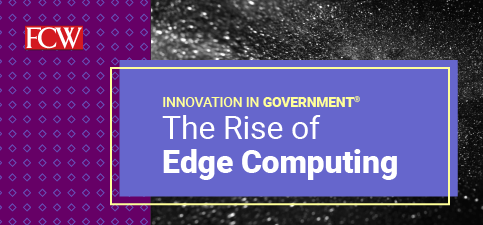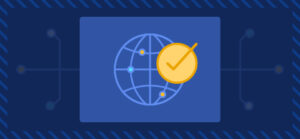The proliferation of internet-of-things (IoT) sensors and an increasingly mobile workforce were dispersing government IT operations farther from the data center long before the coronavirus struck. But the pandemic has spotlighted agency employees’ increasing need for robust, secure capabilities in the field — or at home, in the case of remote work — and decision-makers need fast access to data analytics in a wide variety of situations. All those factors are driving interest in computing at the network edge, or processing data at the site of generation rather than storage. Edge computing has profound implications for a wide range of government missions across local, state, and Federal government, and with the emergence of 5G networks, it is becoming easier to incorporate. And if implemented thoughtfully, the benefits can be immense – reduced network stress, increased cybersecurity and savings in cost, time and storage. Read the latest insights from industry thought leaders in edge computing in Carahsoft’s Innovation in Government® report.
Streamlining the Adoption of Edge Computing
“Open source is a necessary component of edge computing for two main reasons. First, open source is much more secure than its proprietary counterparts due to the increased transparency. For edge deployments with hundreds or even thousands of sites, initially securing and maintaining them are solved through Red Hat open source. Second, open source supports a level of innovation most proprietary systems simply can’t match. When thousands of people work on a technology, that gives it a substantial advantage in terms of new ideas and accelerated innovation.”
Read more insights from Red Hat’s Practice Lead of OpenShift Virtualization, Storage and Hyperconverged Infrastructure in the North American Public Sector, Garrett Clark.
A Unified Approach to Edge Computing
“To avoid piecemeal implementation, edge computing must be part of an agency’s overall IT infrastructure. When done well, it will empower agencies to make more efficient and faster decisions because they’ll be able to harness more data from across the entire landscape. It will also give end users better and faster access to data in the field so they can take advantage of those insights in real time. Edge devices will not replace existing IT but instead will expand on what’s already in place. By incorporating edge computing into enterprise modernization, agencies can also start applying machine learning and other emerging technologies to harness the power of data. However, with edge devices and data now outside agencies’ firewalls, security must be embedded into edge computing. Important tools include automated security and centralized management, perhaps via the cloud.”
Read more insights from Nutanix’s Senior Director of Public Sector Systems Engineers, Dan Fallon.
 How to Unleash the Power of Edge Computing
How to Unleash the Power of Edge Computing
“Edge computing holds a great deal of promise as a stand-alone capability, but when paired with technologies such as advanced connectivity and enterprise data platforms, edge computing can fuel new customer and employee experiences at scale. When agencies combine edge computing with advanced connectivity, for example, they can empower rich, personalized experiences for customers as well as employees. Imagine moving from a 2D world of video consumption to a 3D world with immersive experiences personalized at scale for the individual. Edge computing coupled with advanced connectivity and SAP’s data platform can serve as the foundation to bring these new experiences to life. To help fuel this innovation, advanced connectivity such as 5G and Wi-Fi 6 play an integral role.”
Read more insights from SAP’s Vice President, Global Center of Excellence, Frank Wilde.
Accelerating Mission Success at the Edge
“Sometimes an agency will want to be in a cloud environment, sometimes it will choose an edge computing environment, and often, it will need both. In that situation, some quick analytics can happen at the edge, but then the data can move to the cloud for a deeper evaluation that will draw out more predictive insights and analytics. There are three key considerations agencies should keep in mind when moving to edge computing. First, they should think about it as part of a larger continuum alongside their core technologies, including cloud. Second, agencies should design for consistency in management and orchestration. Regardless of where a workload is running, a consistent approach helps agencies manage IT resources and costs and allows the organizations to scale and expand. The third consideration is more far reaching, but I encourage agency leaders to think about the opportunities that edge computing opens up.”
Read more insights from Dell’s Global Marketing Director of Edge and IoT Solutions, Kirsten Billhardt.
Beyond the Data Center and the Cloud
“We expect the number of connected devices to reach nearly 45 billion by 2025, gathering close to 80 zettabytes. Unfortunately, sending that growing amount of data to the cloud for processing is not always the best option due to bandwidth limitations and cost concerns. Many government systems are also not connected to the cloud and need to process data locally. Edge technology evolved to meet those challenges by bringing the advantages of cloud closer to the edge. Business applications enabled by edge computing include autonomous delivery, machine control, environmental monitoring, fleet vehicle diagnostics, vision-based analytics and defect detection. Edge computing is particularly beneficial in two situations: when a great deal of data needs to be migrated to the cloud for storage but there is little or no bandwidth and when data needs to be collected and acted on quickly at the edge (e.g., autonomous vehicles and drones).”
Read more insights from AWS’s Principal Technical Business Development Leader for IoT in the Worldwide Public Sector, Lorraine Bassett.
Edge: The Next Paradigm Shift in IT
“Agencies can protect their data and applications across any cloud strategy (including on-premises, private, hybrid, multi-cloud or edge computing) with a cloud-agnostic, edge-based Web Application and API Protection (WAAP) solution. A globally distributed WAAP will protect websites, applications and APIs from downtime and data theft due to web attacks and distributed denial-of service (DDoS) attacks. All network-layer DDoS attacks, including those by large IoT botnets, are instantly dropped at the edge because a WAAP functions as a reverse proxy and only accepts traffic via ports 80 and 443. Any application-layer DDoS or web attack will be automatically inspected and stopped at the edge without disrupting access for legitimate users. Additionally, modern application architectures are shifting toward greater use of microservices and away from monolithic pieces of software. Small, independent microservices are assembled into more complex applications so they can leverage fully functional and distributed processes from third-party APIs.”
Read more insights from Akamai’s Senior Vice President of Web Performance, Lelah Manz.
Download the full Innovation in Government® report for more insights from these government edge computing thought leaders and additional industry research from FCW.







